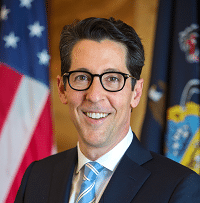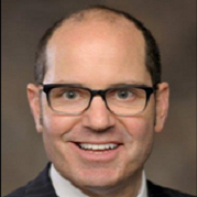Blog Archive
Blog Archive
Welcome to the Center for Retirement Initiatives (CRI) Policy Blog. The objective of this blog is to create an expert policy forum where the Center can share everything from the latest research and resources related to state retirement savings initiatives for private sector workers to federal legislative and regulatory developments. We will also provide updates on the latest retirement security data, best practices and lessons learned from program design and implementation at home and abroad. For those interested in learning more about a particular topic, each post may provide additional reading and resources to allow for a more in-depth exploration of the related research and policy issues.
The views and opinions expressed in this blog are the views of the authors and do not reflect any policy or position of the Center for Retirement Initiatives.
For more recent blog posts, please click here to visit our main blog page.
2019

How to Evolve Default Options for Retirees in DC Plans
By Jason Shapiro
Here are several forward-looking ideas for defaults within the industry’s reach that can facilitate better outcomes by creating a path for current and future innovations. Target-date funds, which have become a popular default investment in defined contribution (DC) retirement plans, are a great tool to help American workers prepare for retirement, but we feel they are not necessarily designed to serve the needs of today’s retirees who are living longer than those in the past.

Emergency Savings: What’s at Stake for the Retirement Industry?
By Catherine Harvey
In the field of retirement and financial wellness, most people can recite the Federal Reserve’s statistic that 40% of U.S. households would struggle to cover a $400 unexpected expense. The AARP Public Policy Institute went beyond “the $400 problem” in our recent report, Unlocking the Potential of Emergency Savings Accounts, and presented a more-nuanced portrait of the population that lives one surprise away from financial distress.

Why Diversity in Investment Management Matters
By Robert Raben
When I started the Diverse Asset Managers Initiative (DAMI) five years ago, it was in direct response to the insufficient use of minority- and women-owned asset management firms by institutional investors. Without an abundance of data to understand why these firms were not participating fully in the management of the largest pools of capital, we were constantly asking ourselves, “Is there just a lack of MWBOs in the field?” “Did it come down to an issue of performance?” “If so, did these firms not have the talent and resources needed to perform as well as or outperform their white counterparts?”
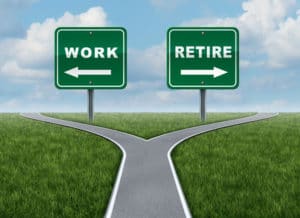
The Reality Behind the Idea of Working Longer
By Laura Kim and Angela Antonelli
While the idea of retiring by age 65 becomes increasingly outdated, how realistic is the expectation that Americans can simply choose to work longer? Older workers face a difficult set of circumstances, with those wishing to remain employed finding it increasingly difficult to land and keep jobs, while many who might prefer to retire must keep working to make ends meet.

No, Really — This Time is Different in Retirement Income
By Josh Cohen
“This time is different.” We’ve heard it before. We heard it when technology stocks were skyrocketing in the late ’90s, and then just before the real estate bubble burst a decade ago. The discussion of retirement income in defined contribution (DC) plans has that same feel now.

The Impact of Student Loan Debt on Older Americans
By Patrick McNamara, Angela M. Antonelli and Laura Kim
After decreasing with the onset of the Great Recession, debt levels are once again rising. At the end of 2018, overall household debt reached an all-time high. A closer examination highlights two significant and troubling trends: student loans represent an increasingly large portion of aggregate debt, and older Americans bear a growing proportion of this burden.

How Much Is Enough? The Challenge of Helping Workers Determine Their Retirement Income Needs
By Ivy Deng, Laura Kim, and Angela Antonelli
How much is enough? That’s the difficult question policymakers and individuals have to answer when it comes to retirement security and determining retirement income adequacy. With today’s defined contribution (DC) plans, all the responsibility has shifted to the worker to make the right savings and investment decisions — decisions that will significantly affect the amount of money available for retirement.

From Savings to Security: The Future of Innovation in DC Plan Design
By Angela M. Antonelli
The Georgetown University Center for Retirement Initiatives (CRI) convened an invitation-only one-day policy forum in June 2018 with approximately 100 senior industry leaders, policymakers, and stakeholders to examine some of the key challenges in designing a retirement savings system focused on improving long-term outcomes to strengthen retirement security for millions of Americans.
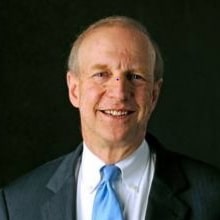
Achieving Economies of Scale in State-Facilitated Retirement Savings Programs: The Case for Multi-State Collaboration
By Angela M. Antonelli, J. Mark Iwry and David C. John
Over the last several years, most states have been actively engaged in exploring ways to enable more private-sector workers to save for retirement. In addition to understanding the need to enhance retirement security by expanding coverage, they recognize that the failure to do this would expose state governments to increased budget pressure, because increasing numbers of retirees with insufficient savings need additional social services.
2018
The Next Generation of NEST Program Reforms in the UK: Anticipating Some Challenges Will Strengthen the Foundation for Continued Success
By Will Sandbrook
“Work Hard. Save Easy.” The OregonSaves Retirement Program is Off to a Promising Start
By Tobias Read, Oregon State Treasurer
What Does an Aging Population Mean for Economic Growth and Investing?
By Paula Campbell Roberts
The Stress Behind the Dykes: Debating the Next Generation of Retirement Policy Reforms in the Netherlands
By Harry H.G. Smorenberg
The Unique and Varied Challenges Women Face Planning and Preparing for Retirement
By Laura Kim and Angela M. Antonelli
A Call to Action in Pennsylvania: The Demographic, Fiscal, and Economic Consequences of Retirement Insecurity Are Hard to Ignore
By Joe Torsella, Pennsylvania State Treasurer
The Aging of America: A Changing Picture of Work and Retirement
By Angela M. Antonelli
Closing the Global Retirement Savings Gap: A Tale of Two Numbers
By Han Yik
2017
A Key to Strengthening Retirement Security: Return to Designing Retirement Plans Focused on Lifetime Income Strategies
By Martin Noven and Angela M. Antonelli
The Changing Nature of Work: More Can Be Done to Help Contingent Workers Save for Retirement
By Angela M. Antonelli, Christopher Woika and Laura Kim
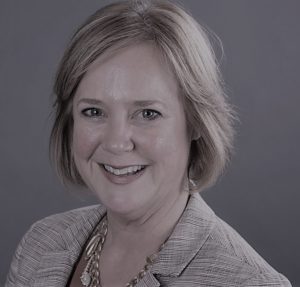
Launching OregonSaves: Early Lessons from an Innovative Public-Private Partnership
By Lisa A. Massena, CFA
With a great deal of local and national engagement and support, Oregon will soon be launching the nation’s first state-sponsored auto-enrollment individual retirement account (IRA) program.

Small Businesses & Retirement Readiness: Vermont Embraces a Multiple Employer Plan Approach
By The Honorable Beth Pearce

It’s Never Too Early to Save for Retirement: Strengthening Retirement Security Begins by Reaching Millennials
By Laura Kim and Angela M. Antonelli

Congress Should Encourage State Innovation to Strengthen Retirement Security
By Charles E.F. Millard and Angela M. Antonelli
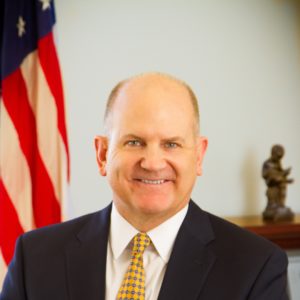
Expanding Small Business Access to Retirement Plans
By David Damschen and Richard Mourdock
2016

Building a Publicly-Sponsored Private Sector Retirement System: Lessons from Australia
By Zachary May

Delivering on Publicly-Sponsored Private Retirement Accounts: Key Considerations for Successful Public-Private Partnerships
By Richard Mourdock

What We Know About Retirement Savings: Why Strategic Behavioral “Nudges” Make Sense
By Angela M. Antonelli and Yijun Yin

Employees’ Financial Wellness: New Strategies for State-Sponsored Retirement Plans
By Annamaria Lusardi

Beyond ERISA: Other Regulatory Considerations for State-Sponsored Retirement Plans
By David Morse – Partner Access Only

States Bridging the Partisan Divide on Retirement Security
By Angela M. Antonelli and David C. John

State Retirement Savings Programs: Current Status, Lessons Learned and Future Prospects
By Angela M. Antonelli – Partner Access Only

Building Effective Retirement Savings Programs for Uncovered Workers: Lessons from the UK Experience
By Keith Ambachtsheer and Will Sandbrook

529 College Savings Plans: Lessons for State Sponsored Private Sector Retirement Plans
By Andrea Feirstein






